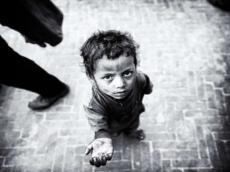|
|
TODAY.AZ / Analytics
Armenia grappling with poverty, corruption despite European aids
21 January 2015 [15:30] - TODAY.AZ

By Mushvig Mehdiyev
Armenia is still grappling with poverty, corruption and growing prices despite receiving packages of financial aid from western countries.
The European Union has recently adopted a decision to allocate 77.5 million euros to Armenia, which Prime Minister Hovik Abrahamyan called a step of vital importance for Armenia.
According to Armenianreport.com, a local media outlet, nearly 25 million euros out of the total fund is allocated to agricultural field with an ultimate aim to cut the poverty. Meanwhile, 21 million euros will go to strengthening of anti-corruption measures and reforms in the civil services. The rest of the money is planned to be invested in various fields including the migration, employment, as well as the Yerevan metro.
The Armenian authorities are very happy that the mentioned allocation is not a loan, but grant. As the external debt of the post-Soviet country has increased by 3.4 times since 2005 reaching $5 billion, happy smile on the face of Armenian elite is not surprising.
But what is going on in Armenia's front for combating the poverty and corruption amid receiving of a multi-million financial aid?
About 528 cases of corruption have been registered in Armenia over the last year, which twice surpasses the same number over the same period in 2005, said Armenianreport.com.
The recent corruption cases are called just the tip of an iceberg which covers only the lower-ranking public officers. Corruption in Armenia is likened to a multi-headed monster, as the people say a new head grows replacing the cut one. In other words, there is no end in corruption in the South Caucasus country.
The index of freedom from corruption in Armenia is 26.7 which is under the world average, according to the 2014 Index of Economic Freedom. It shows that bribery is deeply rooted in Armenian society and none of the adopted anti-corruption measures can tackle it.
Moreover, Phil Duncombe, Representative of the OECD SIGMA Program, has earlier said the luxurious mansions and expensive cars of the civil servants were the main indicators of corruption in Armenia.
The same trend is also observed in combat against the poverty in Armenia, as the World Bank-based preventive measures to cut poverty gave no results to tackle the large-scale poverty. The latest report about the poverty rate was 32 percent, according to the National Statistics Service.
Armenia has received $177 million for its agriculture industry under the Millennium Challenge Program. It would be better not to remind the massive financial inflows to Armenia from other international organizations. But what about the results? The official data claims that there was a 1.9 percent increase in the overall agricultural production. It means that the retail prices of agro products on the domestic markets should be subsequently lowered. But everything has gone vice versa to end up in an overwhelming price hike observed at 3 percent average increase in last December, according to NSS.
According to a survey conducted by 1in.am before the recent New Year holiday in Armenia, poor financial conditions, fear of applying bank loans and skyrocketing food prices were the main reasons urging Armenians to have an empty holiday table.
URL: http://www.today.az/news/analytics/138393.html
 Print version
Print version
Connect with us. Get latest news and updates.
See Also
- 03 April 2025 [20:12]
How Donald Trump’s tariff impacts Azerbaijan’s trade with US [COMMENTARY] - 03 April 2025 [08:30]
Azerbaijan, Germany forge stronger ties in trade, energy, and peace-building - 02 April 2025 [17:56]
Azerbaijan represented at Int'l Theater Week in Uzbekistan - 27 March 2025 [17:25]
Azerbaijan leverages natural advantages for export success through boosting cotton sector - 25 March 2025 [15:15]
China steps up as new leader in global climate governance - 19 March 2025 [14:05]
US-Israel-Azerbaijan partnership to shape regional dynamics amid peace efforts - 19 March 2025 [10:44]
Athletes impress everyone with breathtaking performances - 19 March 2025 [08:30]
Azerbaijan's ongoing restoration efforts: Glimpse into revival of Aghdara - 17 March 2025 [20:25]
Understanding Azerbaijan: why West needs to learn from history before acting - 15 March 2025 [20:20]
Digitalization and education: Azerbaijan's National Program to prepare for future of economy
Most Popular
 Man with a "small brain" – Adam Schiff will not find it enough
Man with a "small brain" – Adam Schiff will not find it enough
 Armenia on the verge of economic collapse - sanctions fraud failed
Armenia on the verge of economic collapse - sanctions fraud failed
 Iranian presidential adviser visits Azerbaijan for high-level talks
Iranian presidential adviser visits Azerbaijan for high-level talks
 British MP honors Azerbaijani Genocide Day in Parliament on March 31st
British MP honors Azerbaijani Genocide Day in Parliament on March 31st
 Armenian populists offended by the nickname "populists"
Armenian populists offended by the nickname "populists"
 PLA launches exercises near Taiwan island
PLA launches exercises near Taiwan island
 Turkiye to introduce parental consent for social media users under age of 16
Turkiye to introduce parental consent for social media users under age of 16
